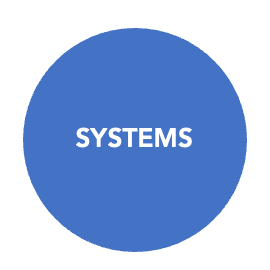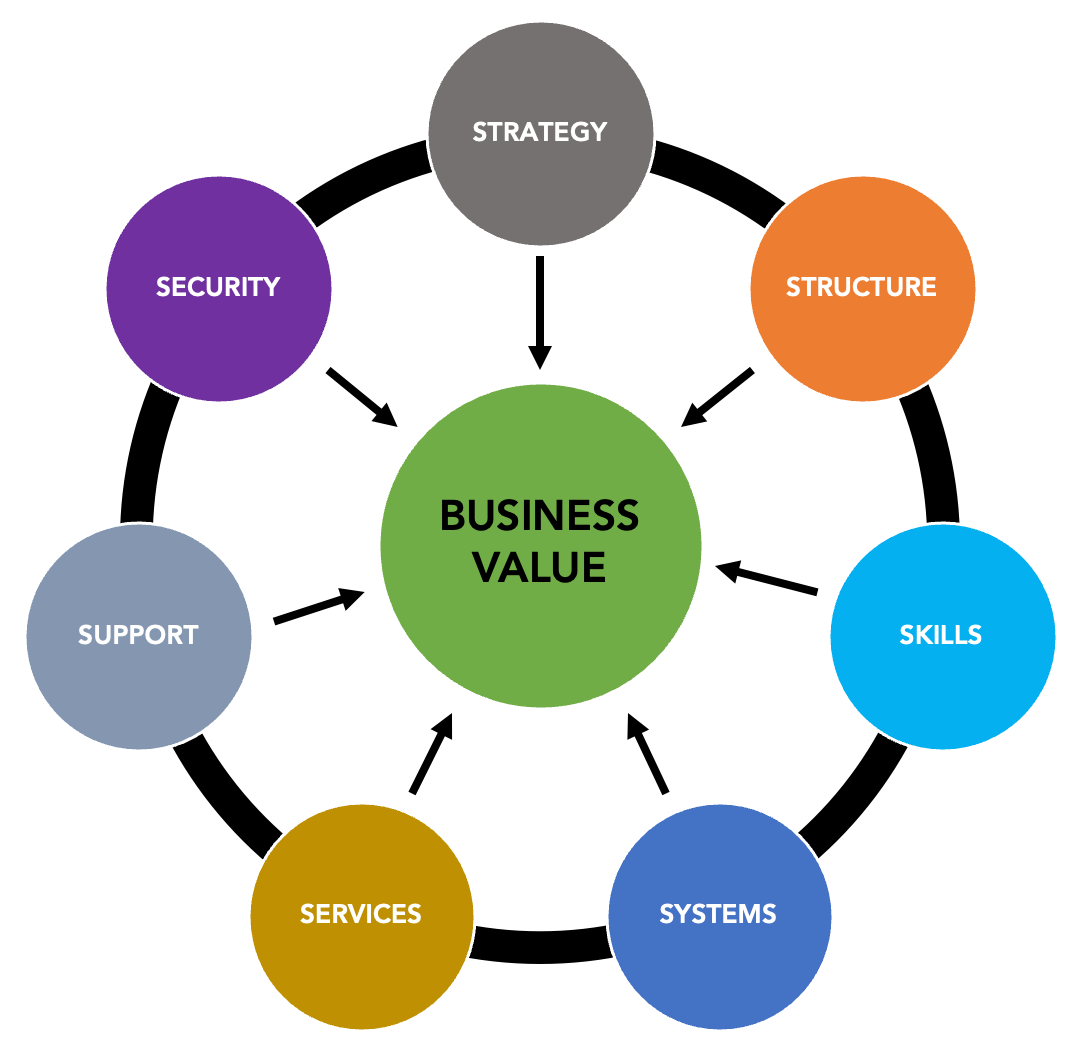The 7S Flywheel
Successful digital transformation requires holistic changes across seven areas: Strategy, Structure, Skills, Systems, Services, Support, & Security.

The journey of digital transformation is challenging, fraught with obstacles, and notoriously difficult to complete. In fact, research conducted by leading business consulting firms (McKinsey, Bain, KPMG, and BCG), puts the risk of failure for digital transformations between 70% to 95%.
In a territory that has such a high risk and likelihood of failure, what can leaders do to be successful in their digital transformation journey?
Business transformations that find the elusive success of navigating a digital pivot are led by bold business leaders who are committed to making profound and foundational changes in how data and technology becomes a part of the business.
The pivot to becoming a data and technology driven organization requires business leaders to activate change in the following 7 areas.👇
The mnemonic 7S makes it easy to remember the domain names.

To digitally reinvent the business, leaders should start by defining the overarching business and technology strategy that will guide the roadmap and journey. The strategy lays a clear business case and also outlines the business objectives behind the drive to "digitize' your products, services, customer experiences, and business operations.

Trying to execute a digital transformation within the constraints of a legacy organization structure can feel like fitting a square peg in a round hole. To be effective in delivering a digital pivot, leaders have to evaluate and reshape the structure of their organization. This will ensure that within the organization, every group's talent, incentives, and goals can be aligned with the new digital business model.

The best digital strategies and the most efficient organizational structures can fall flat and be rendered useless if they are not supported by the appropriate talent pool and team culture. Leaders need to take an active role in building team culture, skills development and hiring decisions. Over time, a digital transformation cannot be sustained unless the organization structure is populated with the right talent.

In order to digitally scale-up products, services, and capabilities over time, the business requires a strong foundation of systems. These systems typically include software platforms, technology infrastructure and also business processes. Depending on the type of business and objectives of the digital transformation, a significant amount of investment is required into systems that will 'digitize' your products, services, customer experiences, and business operations.

Embedding data and technology in the core services (and products) of your organization will also drive fundamental changes in how the service is delivered and managed. In many cases, entirely new business models and customer journeys may need to be established from the ground up that integrates data and technology powered digital services (and products).

As the business reinvents itself digitally, the concept of support and the experience of internal and external customers must be reshaped and rethought. Once the internal business processes become more digitized, appropriate scaling of tech support has to be implemented. Additionally, with products, services, and customer experiences becoming digitized, the organization has to redefine its service approach and vendor relationships.

With increasing digitization, the business has to also contend with new security attack vectors and considerations for business continuity. In addition to building internal cybersecurity capabilities, the business must include the security and continuity of mission-critical digital services in its disaster recovery, business continuity and risk management plans.
The approach for transforming each of the seven domain areas can be quite nuanced and will vary based on factors such as the industry sector, digital maturity, and the business's current state. For brevity, detailed tactics are not covered in this post.
The key takeaway for business leaders is that all seven domains of the 7S flywheel have to be activated to drive sustainable creation of business value from your investments in data and technology.
